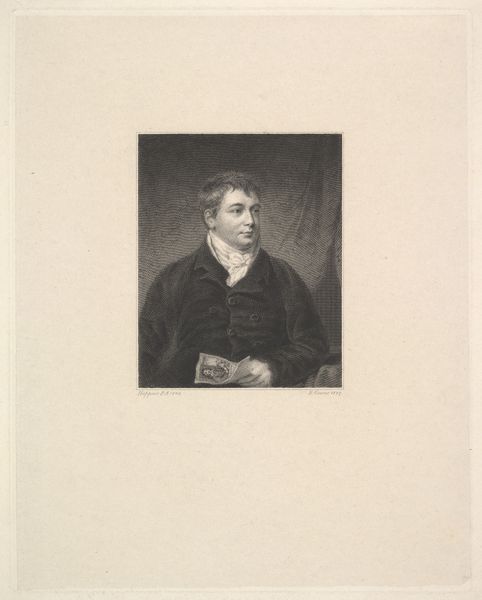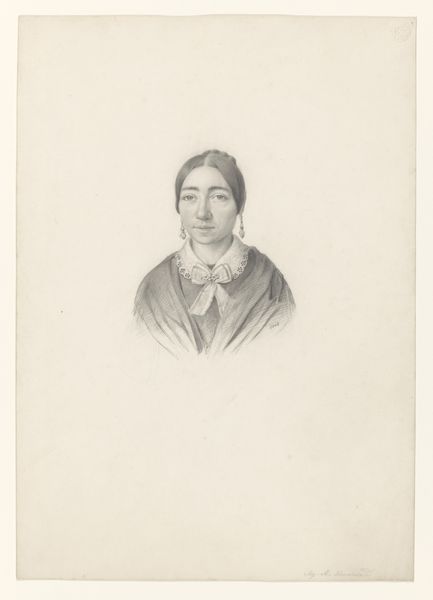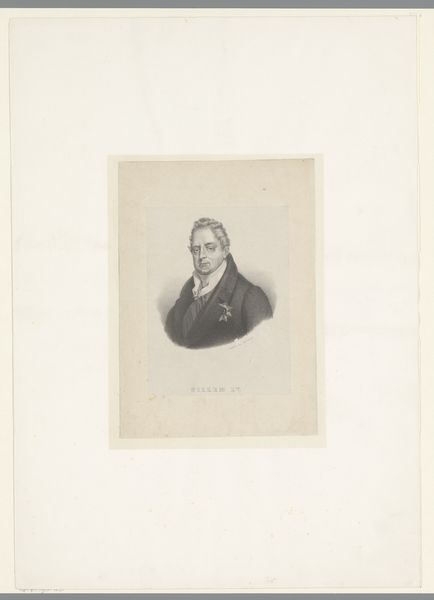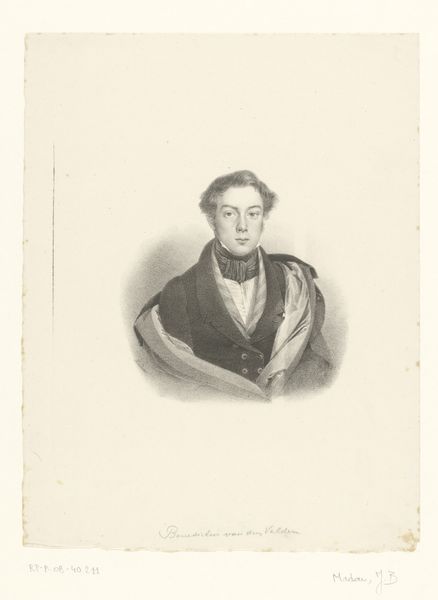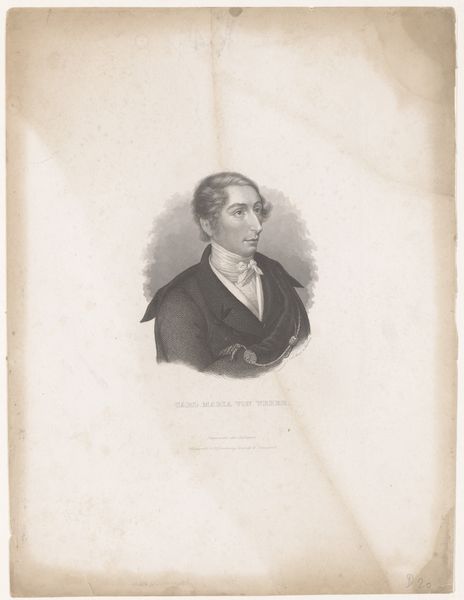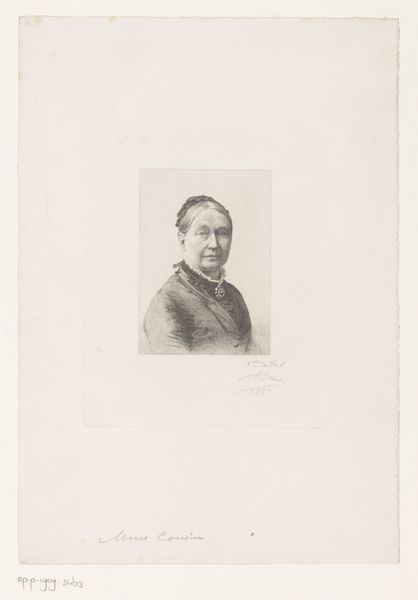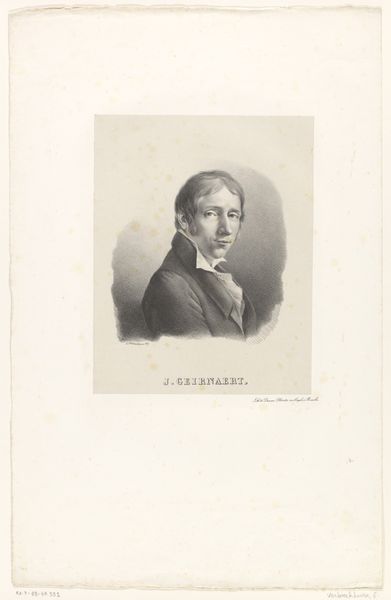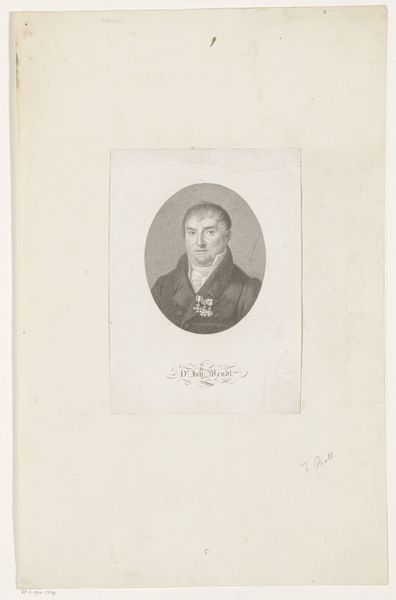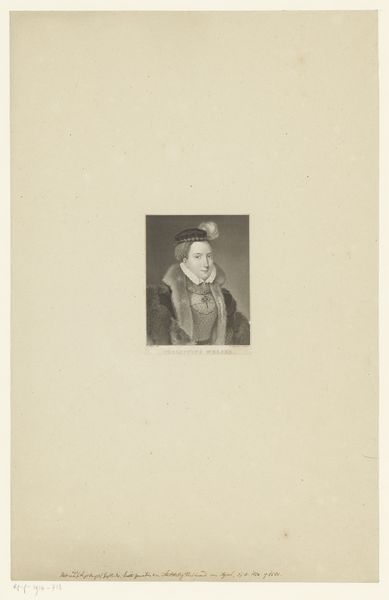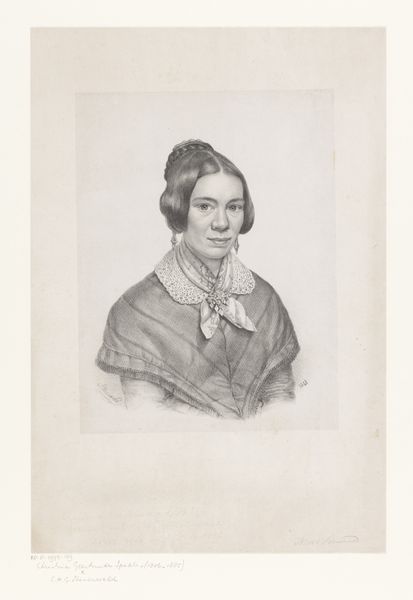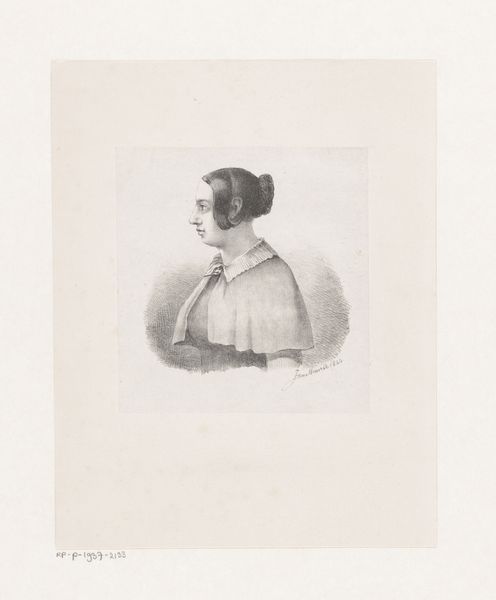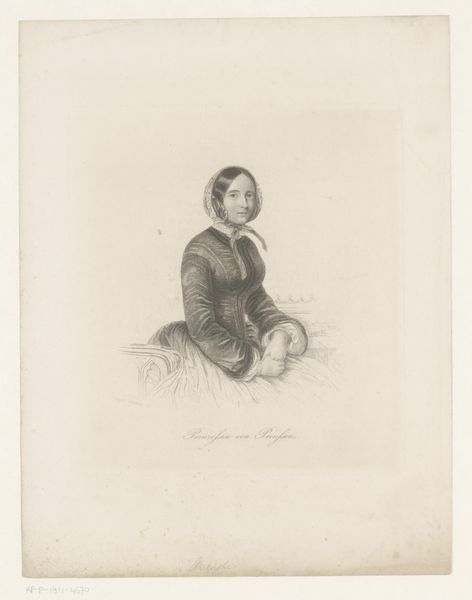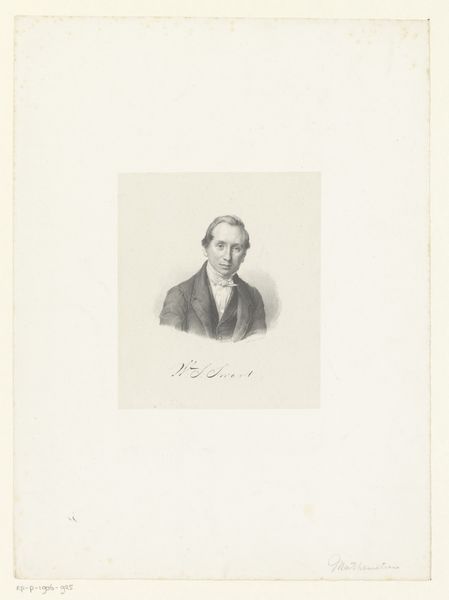
Dimensions: height 280 mm, width 210 mm
Copyright: Rijks Museum: Open Domain
Curator: Here we have "Portrait of Robert Geel", dating from 1842 to 1887, attributed to Carel Christiaan Antony Last, residing here at the Rijksmuseum. It’s a fascinating example of academic portraiture from the Romantic era. Editor: My first impression is the subdued elegance of the pencil work. There's a captivating sense of both meticulous detail and ethereal grace; an intimacy conveyed despite the subject's reserved expression. It’s the quiet sort of drawing that invites prolonged observation. Curator: Absolutely. Notice how the engraving technique mimics the subtlety of pencil and ink? It speaks to the evolving printmaking technologies and their intersection with traditional drawing practices. Editor: Indeed. Consider the societal position Last occupied while executing this piece. Commissions like this reaffirmed status, not just of the sitter, but of the artist within that complex social milieu. The portrait’s purpose extends beyond simple representation, doesn’t it? Curator: I think it does, the soft gradients achieve a remarkable likeness. One might analyze the kind of pencil Last was using; the quality of the paper or ink, to better appreciate his skill. Editor: Or the function it fulfilled. The meticulous rendering might signal this portrait's intended function as a commemorative object within family lineage. Note the subject holding the quill—the active intellectual implied within this carefully constructed image of power and cultivation. It all circles back to understanding its consumption. Curator: It makes one wonder about Robert Geel himself—the politics surrounding who gets memorialized. We gain insights into social strata. The image isn't just art; it's documentation. Editor: Exactly. It pushes beyond pure aesthetic judgment to investigate who controls representation and to what effect within society. Curator: Looking again at the work now, its layers seem more dense than it first appeared. The implications of artistic decisions echo so much wider. Editor: Agreed. I appreciate now the ways process and historical context have altered my reading. A single image unlocks societal reflection.
Comments
No comments
Be the first to comment and join the conversation on the ultimate creative platform.
